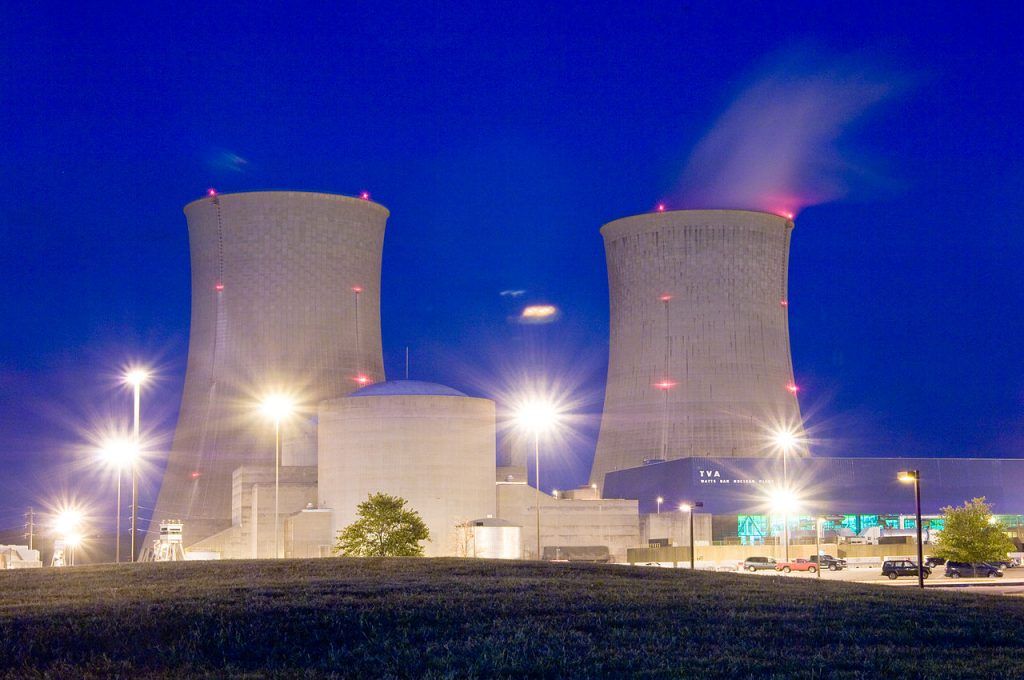Uranium supplies are not a US national security problem. Why is Trump pretending the opposite?
By Sharon Squassoni | April 28, 2020
 The Watts Bar Nuclear Power Plant Unit 2, located in Tennessee, took more than 40 years to complete.
The Watts Bar Nuclear Power Plant Unit 2, located in Tennessee, took more than 40 years to complete.
Trouble has been brewing in America’s nuclear sector for decades. Once the preeminent nuclear technology exporter to the world, the US industry has atrophied and taken on foreign owners, and nuclear energy has been losing its foothold in US electricity markets. A much-hoped-for nuclear renaissance hasn’t materialized, in part because of the reactor meltdowns in 2011 in Fukushima, Japan. But the larger problem plaguing the US nuclear industry isn’t safety-related; it’s economic. In the United States, nuclear power hasn’t been competitive on price for many, many years, and so very, very few nuclear power plants are being built, as existing US plants are increasingly shuttered for financial reasons.
The Trump administration has a plan for that, based on wishful thinking and false premises.
Last week, the US Energy Department released a report designed to reinvigorate the American nuclear industry from top to bottom. “Restoring America’s Competitive Nuclear Advantage: A strategy to assure national security” paints a picture of an industry on the brink of collapse, endangering our national security. The solutions proposed include mining around the Grand Canyon and establishing a uranium reserve, buying small and microreactors for US government facilities, stripping regulatory processes, and muscling into foreign markets now occupied by China and Russia. This fantasy list of projects would be economically unwise at any time, but especially is now, when the country faces an enormously costly and as-yet-unresolved pandemic.
Even more important, because it openly declares that domestic nuclear supplies are a national security priority, the new plan undermines decades of American nuclear nonproliferation efforts. Instead of protecting US national security, the plan would endanger it.
A strange focus. The administration has picked a peculiar time to declare a nuclear power crisis when there is an actual crisis on its hands—the COVID-19 pandemic. Of course, with resilience and resources very much a public concern now, the administration may be seeking to capitalize on public fears of shortages to promote the nuclear industry. So let me issue a false equivalency alert: Unlike the current situation regarding personal protective equipment and other medical supplies, there is no absolute shortage of uranium. In fact, there has been a glut on the market since the 2011 Fukushima accident, which caused nearly all of Japan’s reactors (54 in total) to shut down for years (and some of them permanently). Despite the Trump administration’s classification of uranium as a “critical mineral” last year (such items are typically in short supply), uranium is found all over the world and in vast quantities in the ocean (which holds 500 times the amount estimated in land reserves).
The new plan, however, seeks to beef up the front end of the US nuclear fuel cycle (uranium mining, conversion, and domestic enrichment) because it asserts that dependence on foreign uranium impairs US national security. But the United States has relied on foreign sources of uranium for decades, and the US production slump of the last five years is a reaction to market forces that demonstrate the market is working properly. The United States and its nuclear utilities have depended on foreign uranium for deliberate and effective reasons. For example, the purchase of uranium from dismantled Russian nuclear weapons gave Russia an incentive not to reuse that material and to put it to good use making electricity in the United States. In fact, diversifying suppliers has made good business and diplomatic sense, so US utilities now source their uranium from 10 of the 19 uranium suppliers in the world, relying most heavily on trusted allies like Canada and Australia.
For true national security purposes—nuclear weapons, naval fuel, and some anti-armor munitions—there is absolutely no shortage of uranium. The United States is awash in uranium processed during the Cold War. After Russia, the United States has the largest stockpile of uranium from defense programs on the planet—585 tons of highly enriched uranium from dismantled nuclear warheads, most of which has been reserved for naval nuclear fuel and other defense purposes. It will be many decades before the United States runs short of enriched uranium for defense purposes. If it ever does.
The true cost of an unwarranted nuclear plan. It’s hard to estimate how much the new Trump strategy will cost, because much of it will never be implemented. The uranium reserve is expected to cost $1.5 billion over 10 years; reactor research and development subsidies could cost several billion dollars more. Export subsidies could lead to tens of billions of dollars in loans if implemented. But for items like allowing mining around the Grand Canyon, previously prohibited, the environmental, social, health, and economic costs could be enormous, especially for local native tribes.
The damage to US diplomacy could also be extensive. For 70 years, the United States has led the fight to limit the spread of nuclear weapons. Treaties help in this regard, but keeping the building blocks of weapons out of the hands of would-be proliferators helps more. For at least 20 years, US officials have told countries that want to develop commercial nuclear power that they should rely on the international market for fuel, just as the United States has done for decades. Claiming that US national security suffers if the United States relies on foreign sources of uranium contradicts that key message of US nonproliferation policy. It will give countries of concern—Saudi Arabia and Iran, among many—more international credibility than they deserve should they opt to pursue their own domestic uranium mining and processing programs. And any country with a domestic mining and enrichment program has the building blocks not just for a commercial nuclear power industry, but for a nuclear weapons program, also. And if, as the administration tells us, “nuclear power is intrinsically tied to national security,” why wouldn’t they pursue it?
Draping industry subsidies with the flag of national security is a well-worn tactic for funneling taxpayer dollars into uneconomic ventures. When it comes to nuclear energy and nuclear weapons, there are additional costs that could cause lasting damage to international security. At a time when US leadership is being tested severely across a wide range of issues, the administration should quietly abandon its attempts to reframe US nuclear energy as a national security imperative and instead hang onto what little leadership it continues to exert in the area of nuclear nonproliferation by cultivating cooperation and adherence to the high standards that the United States has long championed.
Together, we make the world safer.
The Bulletin elevates expert voices above the noise. But as an independent nonprofit organization, our operations depend on the support of readers like you. Help us continue to deliver quality journalism that holds leaders accountable. Your support of our work at any level is important. In return, we promise our coverage will be understandable, influential, vigilant, solution-oriented, and fair-minded. Together we can make a difference.
Keywords: nuclear economics, nuclear energy, nuclear industry
Topics: Nuclear Energy, Nuclear Weapons















The ocean may contain uranium 500 times land reserves, and this uranium is hugely cheaper, per calorie, than any fossil fuel, but it is *subeconomic*, i.e. compared to those land reserves it costs too much to extract. So the 500 is the value of a nonsense, apples-to-oranges ratio. What makes sense is comparing subeconomic U in the ocean to subeconomic uranium in land, and *that* ratio is one to ~8000.There is enough uranium in the ocean to cover the greater Tokyo area in UO2 gravel about a foot deep, and enough uranium in the continental crust to cover Tokyo area… Read more »